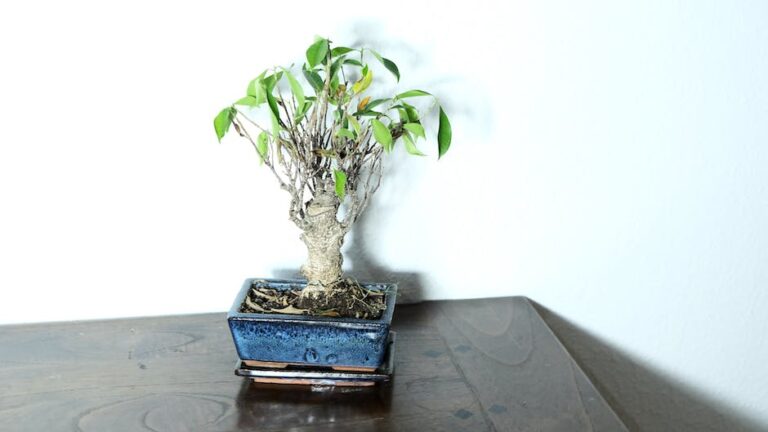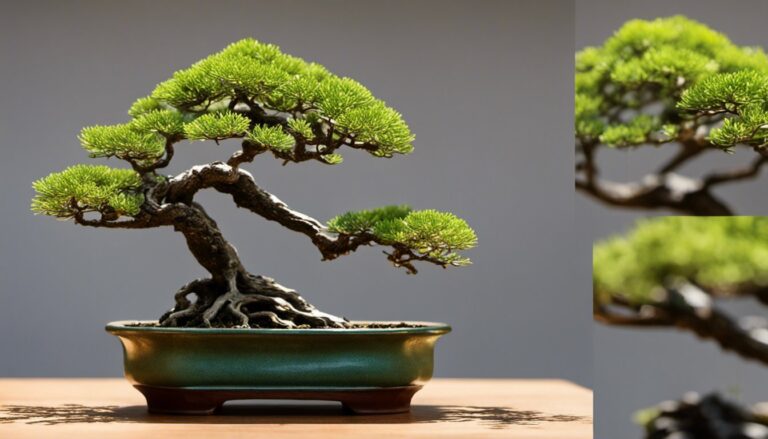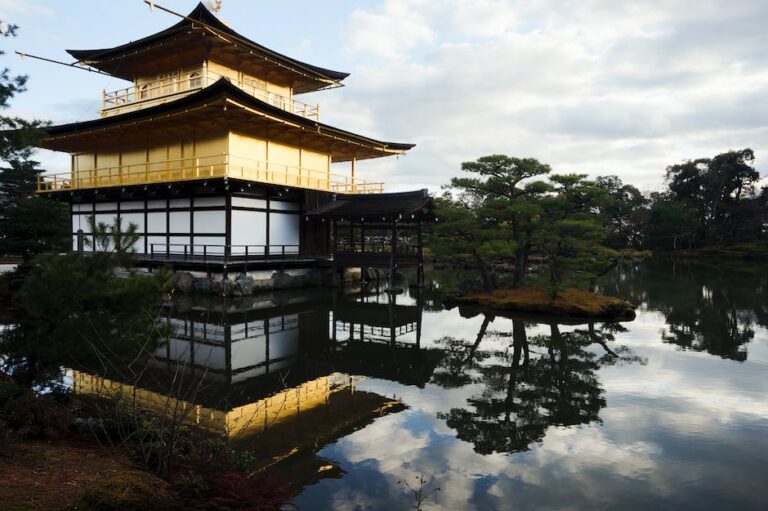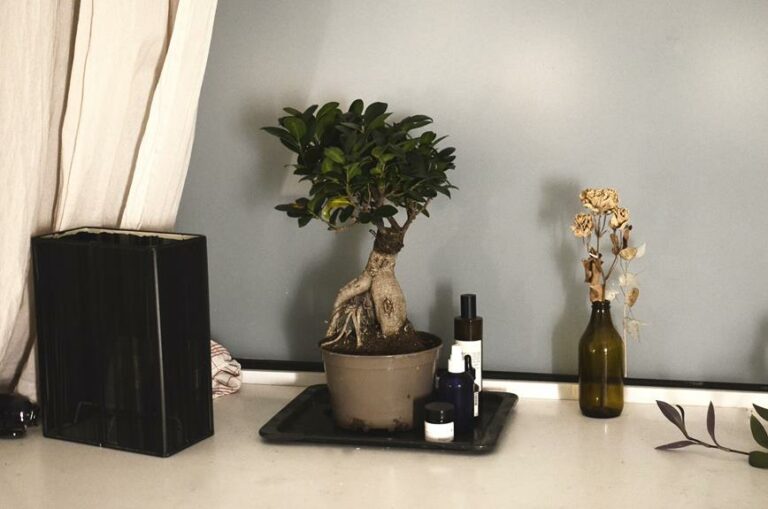Are Bonsai Trees Hard To Keep Alive
-
Table of Contents hide
Table of Contents
- The Basics of Bonsai Tree Care
- Common Mistakes to Avoid When Caring for Bonsai Trees
- Choosing the Right Bonsai Tree for Your Skill Level
- Essential Tools and Equipment for Bonsai Tree Maintenance
- Understanding the Watering Needs of Bonsai Trees
- Pruning and Shaping Techniques for Bonsai Trees
- Troubleshooting Common Issues in Bonsai Tree Care
- Conclusion
Bonsai trees are miniature trees that require special care and attention to thrive. Many people are drawn to the art of bonsai due to its beauty and tranquility. However, keeping bonsai trees alive can be a challenging task for beginners.
The Basics of Bonsai Tree Care
Are Bonsai Trees Hard To Keep Alive
Bonsai trees are known for their beauty and elegance, but many people are hesitant to try their hand at caring for one because they believe it is a difficult task. However, with the right knowledge and a little bit of patience, keeping a bonsai tree alive can be a rewarding and enjoyable experience.
The first step in caring for a bonsai tree is understanding its basic needs. Like any other plant, bonsai trees require water, sunlight, and nutrients to thrive. However, because bonsai trees are grown in small containers, their needs are slightly different from those of traditional potted plants.
Watering is perhaps the most important aspect of bonsai tree care. Bonsai trees should be watered regularly, but not excessively. Overwatering can lead to root rot, while underwatering can cause the tree to dry out and die. The key is to find the right balance. One way to determine when to water your bonsai tree is by checking the moisture level of the soil. If the soil feels dry to the touch, it is time to water. However, if the soil feels damp, it is best to wait a little longer before watering again.
In addition to water, bonsai trees also need sunlight to thrive. Most bonsai trees prefer bright, indirect light. Placing your bonsai tree near a window that receives plenty of sunlight is ideal. However, be careful not to expose your bonsai tree to direct sunlight for extended periods, as this can cause the leaves to burn. If you do not have access to a sunny window, you can also use artificial grow lights to provide your bonsai tree with the necessary light.
Another important aspect of bonsai tree care is providing the tree with the right nutrients. Bonsai trees should be fertilized regularly to ensure they receive the necessary nutrients for growth. There are various types of bonsai fertilizers available, and it is important to choose one that is specifically formulated for bonsai trees. Follow the instructions on the fertilizer package to determine the appropriate amount and frequency of application.
In addition to these basic care needs, bonsai trees also require regular pruning and shaping. Pruning helps to maintain the desired shape and size of the tree, while shaping involves wiring the branches to create the desired aesthetic. Pruning and shaping should be done with care and precision to avoid damaging the tree. It is recommended to learn proper pruning and shaping techniques from a bonsai expert or through instructional materials.
While caring for a bonsai tree does require some effort and attention, it is not as difficult as it may seem. With the right knowledge and a little bit of practice, anyone can successfully care for a bonsai tree. Remember to water regularly, provide adequate sunlight, fertilize appropriately, and prune and shape as needed. By following these basic care guidelines, you can enjoy the beauty of a thriving bonsai tree in your home or garden.
Common Mistakes to Avoid When Caring for Bonsai Trees
Are Bonsai Trees Hard To Keep Alive
Bonsai trees are known for their beauty and elegance, but many people are hesitant to try their hand at caring for one because they believe it is a difficult task. While it is true that bonsai trees require a certain level of care and attention, they are not as difficult to keep alive as one might think. In fact, with the right knowledge and a little bit of practice, anyone can successfully care for a bonsai tree.
One of the most common mistakes people make when caring for bonsai trees is overwatering. It is important to remember that bonsai trees are not like regular potted plants. They have a much smaller root system and therefore require less water. Overwatering can lead to root rot and ultimately the death of the tree. To avoid this, it is important to water your bonsai tree only when the soil feels dry to the touch. This will ensure that the tree gets the right amount of moisture without being overwhelmed.
Another mistake that people often make is placing their bonsai tree in the wrong location. Bonsai trees require a balance of sunlight and shade to thrive. Placing your tree in direct sunlight for extended periods of time can cause the leaves to burn and the tree to become stressed. On the other hand, keeping your tree in a dark corner of your home will prevent it from getting the sunlight it needs to grow. It is important to find a location that provides your bonsai tree with the right amount of light throughout the day.
In addition to proper watering and sunlight, bonsai trees also require regular pruning and shaping. This is where many people make another common mistake. It is important to remember that bonsai trees are not naturally miniature versions of their larger counterparts. They require regular pruning and shaping to maintain their desired form. Neglecting to prune your bonsai tree can result in overgrowth and a loss of the tree’s aesthetic appeal. It is important to research the specific pruning techniques for your particular type of bonsai tree and to regularly trim and shape it to keep it looking its best.
Lastly, many people make the mistake of neglecting their bonsai tree’s soil. Bonsai trees require a specific type of soil that is well-draining and allows for proper root development. Using regular potting soil or soil that retains too much moisture can lead to root rot and the death of the tree. It is important to use a bonsai-specific soil or to create your own soil mixture that provides the right balance of moisture and drainage.
In conclusion, while caring for a bonsai tree does require some knowledge and attention, it is not as difficult as it may seem. By avoiding common mistakes such as overwatering, improper placement, neglecting pruning, and using the wrong soil, anyone can successfully care for a bonsai tree. With a little bit of practice and patience, you can enjoy the beauty and elegance of a bonsai tree in your own home. So go ahead, give it a try, and watch your bonsai tree thrive.
Choosing the Right Bonsai Tree for Your Skill Level
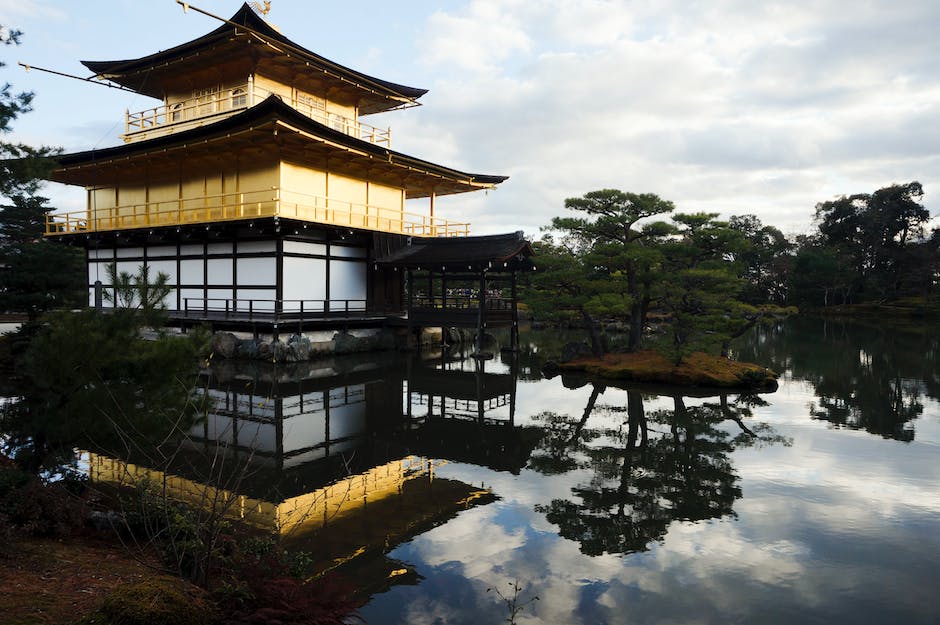
Are Bonsai Trees Hard To Keep Alive
Bonsai trees are known for their beauty and elegance, but many people are hesitant to try their hand at growing one because they believe that bonsai trees are difficult to keep alive. While it is true that bonsai trees require special care and attention, they can be successfully grown by anyone with the right knowledge and skills. The key to keeping a bonsai tree alive lies in choosing the right tree for your skill level.
When it comes to choosing a bonsai tree, it is important to consider your level of experience and the amount of time and effort you are willing to invest in its care. Some bonsai trees are more forgiving and easier to care for than others, making them ideal for beginners. These trees are typically hardy and can withstand a wider range of conditions, making them less likely to die if you make a mistake.
One such beginner-friendly bonsai tree is the Chinese Elm. This tree is known for its adaptability and resilience, making it a great choice for those who are new to bonsai gardening. The Chinese Elm can tolerate a variety of light conditions and can survive in both indoor and outdoor environments. It also has a forgiving nature, allowing beginners to learn from their mistakes without fear of killing the tree.
Another bonsai tree that is suitable for beginners is the Ficus. This tree is known for its ability to thrive in indoor environments, making it a popular choice for those who live in apartments or have limited outdoor space. The Ficus is also relatively easy to care for, requiring moderate watering and regular pruning to maintain its shape. With proper care, the Ficus can live for many years, providing its owner with a beautiful and rewarding bonsai experience.
For those with more experience and a greater commitment to bonsai care, there are a variety of intermediate and advanced level trees to choose from. These trees often require more specific care instructions and may be more sensitive to changes in their environment. However, with the right knowledge and dedication, they can be successfully grown and maintained.
One such intermediate-level bonsai tree is the Juniper. Junipers are known for their unique and intricate foliage, which can be shaped and styled in a variety of ways. They require regular watering and should be placed in a location that receives ample sunlight. Junipers also benefit from periodic fertilization and should be protected from extreme temperatures. With proper care, a Juniper bonsai can become a stunning centerpiece in any garden or indoor space.
For those with advanced bonsai skills, there are a variety of challenging trees to choose from. These trees often require precise care and attention to detail, making them suitable for experienced bonsai enthusiasts. One such advanced-level tree is the Japanese Black Pine. This tree requires meticulous pruning and shaping to achieve its desired form. It also requires specific soil conditions and regular fertilization to thrive. However, for those willing to put in the effort, the Japanese Black Pine can be a truly rewarding bonsai tree to grow.
In conclusion, while bonsai trees do require special care and attention, they can be successfully grown by anyone with the right knowledge and skills. The key to keeping a bonsai tree alive lies in choosing the right tree for your skill level. Whether you are a beginner or an experienced bonsai enthusiast, there is a tree out there that is perfect for you. So don’t be afraid to give bonsai gardening a try and enjoy the beauty and tranquility that these miniature trees can bring to your life.
Essential Tools and Equipment for Bonsai Tree Maintenance
Are Bonsai Trees Hard To Keep Alive
Bonsai trees are known for their beauty and elegance, but many people are hesitant to try their hand at growing and maintaining these miniature masterpieces. One common concern is whether bonsai trees are hard to keep alive. The truth is, with the right tools and equipment, anyone can successfully care for a bonsai tree.
One essential tool for bonsai tree maintenance is a pair of bonsai shears. These specialized scissors are designed to make precise cuts, allowing you to shape and prune your tree with ease. Regular pruning is necessary to maintain the desired shape and size of your bonsai tree, and bonsai shears make this task much easier. They are also useful for removing dead or diseased branches, which can harm the overall health of your tree.
Another important tool for bonsai tree maintenance is a bonsai wire cutter. Bonsai trees are often shaped using wire, which is wrapped around the branches and trunk to guide their growth. Over time, the wire can become embedded in the tree’s bark, making it difficult to remove. A bonsai wire cutter is specifically designed to cut through the wire without damaging the tree. This tool is essential for maintaining the shape and structure of your bonsai tree.
In addition to these specialized tools, there are a few other essential items you will need for bonsai tree maintenance. One of these is a bonsai watering can. Bonsai trees require regular watering, but it is important to avoid overwatering, as this can lead to root rot. A bonsai watering can has a long, narrow spout that allows you to water your tree gently and precisely, ensuring that the water reaches the roots without causing any damage.
Another important item for bonsai tree maintenance is a bonsai soil sieve. Bonsai trees require well-draining soil to thrive, and a soil sieve is essential for ensuring that the soil is free from clumps and debris. By sifting the soil before repotting your bonsai tree, you can create a healthy environment for its roots to grow and develop.
Finally, a bonsai tree needs a suitable container to grow in. Bonsai pots come in a variety of shapes, sizes, and materials, and choosing the right one is essential for the health and aesthetics of your tree. The pot should be shallow and have drainage holes to prevent water from pooling around the roots. It should also complement the style and size of your bonsai tree, enhancing its overall appearance.
In conclusion, while bonsai trees require regular care and attention, they are not necessarily hard to keep alive. With the right tools and equipment, anyone can successfully maintain a bonsai tree. Bonsai shears and wire cutters are essential for shaping and pruning the tree, while a bonsai watering can and soil sieve ensure proper hydration and soil quality. Choosing the right bonsai pot is also crucial for the health and aesthetics of your tree. So, don’t be intimidated by the idea of caring for a bonsai tree. With the right tools and a little bit of knowledge, you can enjoy the beauty of these miniature wonders in your own home.
Understanding the Watering Needs of Bonsai Trees
Are Bonsai Trees Hard To Keep Alive
Understanding the Watering Needs of Bonsai Trees
Bonsai trees are known for their beauty and elegance, but many people are hesitant to own one because they believe they are difficult to keep alive. While it is true that bonsai trees require special care and attention, with a little knowledge and understanding of their watering needs, anyone can successfully care for these miniature masterpieces.
Watering is one of the most crucial aspects of bonsai tree care. These trees are typically grown in small pots, which means they have limited access to water and nutrients. As a result, it is essential to provide them with the right amount of water at the right time.
The frequency of watering a bonsai tree depends on several factors, including the type of tree, the size of the pot, the climate, and the time of year. Generally, bonsai trees should be watered when the topsoil feels slightly dry to the touch. However, it is important not to let the soil completely dry out, as this can lead to dehydration and damage the tree’s roots.
To determine if your bonsai tree needs water, gently insert your finger into the soil up to the second knuckle. If the soil feels moist, it is still adequately hydrated. If it feels dry, it is time to water your tree. It is crucial to water the tree thoroughly, ensuring that the water reaches all parts of the root system. This can be achieved by watering until the water begins to drain out of the drainage holes at the bottom of the pot.
It is important to note that overwatering can be just as harmful as underwatering. Excessive watering can lead to root rot and other fungal diseases. To avoid this, it is essential to have proper drainage in the bonsai pot. This can be achieved by using a well-draining soil mix and ensuring that the pot has sufficient drainage holes.
In addition to the frequency of watering, the amount of water given to a bonsai tree is also crucial. The goal is to provide enough water to thoroughly hydrate the tree without leaving it sitting in a pool of water. The amount of water needed will vary depending on the size of the pot and the tree’s overall health. As a general rule, water the tree until the water begins to drain out of the drainage holes, and then wait for the soil to dry slightly before watering again.
It is also important to consider the climate and time of year when watering your bonsai tree. During hot summer months, bonsai trees may require more frequent watering due to increased evaporation. Conversely, during colder months, the tree’s water needs may decrease. It is essential to monitor the soil’s moisture level regularly and adjust your watering schedule accordingly.
In conclusion, while bonsai trees do require special care and attention, understanding their watering needs is key to keeping them alive and thriving. By providing the right amount of water at the right time, ensuring proper drainage, and considering the climate and time of year, anyone can successfully care for a bonsai tree. So, don’t let the fear of watering deter you from owning one of these beautiful miniature trees. With a little practice and patience, you can enjoy the beauty and tranquility of a bonsai tree in your own home.
Pruning and Shaping Techniques for Bonsai Trees
Are Bonsai Trees Hard To Keep Alive
Bonsai trees are known for their beauty and elegance, but many people are hesitant to try their hand at growing and maintaining these miniature masterpieces. One of the main concerns that people have is whether bonsai trees are hard to keep alive. While it is true that bonsai trees require a certain level of care and attention, with the right techniques and knowledge, anyone can successfully keep a bonsai tree alive and thriving.
One important aspect of bonsai tree care is pruning and shaping. Pruning is the process of removing unwanted branches or foliage from the tree, while shaping involves manipulating the tree’s growth to achieve a desired form or style. These techniques are essential for maintaining the health and aesthetics of the bonsai tree.
When it comes to pruning, it is important to remember that bonsai trees are not like regular potted plants. They require regular pruning to maintain their miniature size and shape. Pruning helps to control the growth of the tree and encourages the development of a compact and balanced canopy. It also allows for better air circulation and light penetration, which are crucial for the overall health of the tree.
To prune a bonsai tree, start by removing any dead or dying branches. These branches not only detract from the tree’s appearance but can also serve as entry points for pests and diseases. Next, look for any branches that are crossing or rubbing against each other. These branches can cause damage and should be removed to prevent further problems. Additionally, prune any branches that are growing in an undesirable direction or are too long, as they can disrupt the overall balance and shape of the tree.
Shaping a bonsai tree is a more advanced technique that requires careful consideration and planning. The goal is to create a tree that resembles a mature, full-sized tree but in miniature form. There are several different styles and forms that can be achieved, such as formal upright, informal upright, slanting, cascade, and windswept, among others. Each style has its own unique characteristics and requires specific shaping techniques.
To shape a bonsai tree, start by determining the desired style and form. This will guide your pruning and shaping decisions. Use wire to gently bend and position branches in the desired direction. Be careful not to apply too much pressure, as this can damage the branches. It is also important to regularly check the wire to ensure that it is not cutting into the branches as they grow. Once the desired shape is achieved, remove the wire and allow the tree to settle into its new form.
Pruning and shaping techniques for bonsai trees may seem daunting at first, but with practice and patience, anyone can master these skills. It is important to remember that bonsai trees are living organisms that require care and attention. Regular pruning and shaping will not only keep the tree healthy but also enhance its beauty and elegance. So, if you have been hesitant to try your hand at bonsai tree care, don’t be afraid to give it a go. With the right techniques and a little bit of love, you can successfully keep a bonsai tree alive and thriving.
Troubleshooting Common Issues in Bonsai Tree Care
Are Bonsai Trees Hard To Keep Alive
Bonsai trees are known for their beauty and elegance, but many people are hesitant to try their hand at caring for one because they believe that bonsai trees are difficult to keep alive. While it is true that bonsai trees require a certain level of care and attention, they are not as challenging to maintain as some may think. In this article, we will explore some common issues that bonsai tree owners may encounter and provide troubleshooting tips to help keep your bonsai tree thriving.
One common issue that bonsai tree owners face is overwatering. It is important to remember that bonsai trees are not like regular potted plants and have different watering needs. Overwatering can lead to root rot and other problems. To avoid overwatering, it is essential to check the moisture level of the soil before watering. Stick your finger about an inch into the soil, and if it feels dry, it is time to water. Additionally, make sure that your bonsai tree is potted in well-draining soil and that the pot has drainage holes to allow excess water to escape.
Another issue that bonsai tree owners may encounter is improper pruning. Pruning is an essential part of bonsai tree care as it helps maintain the desired shape and size of the tree. However, it is crucial to prune correctly to avoid damaging the tree. When pruning, make sure to use sharp and clean tools to prevent tearing or crushing the branches. Start by removing any dead or diseased branches, and then carefully trim back any overgrown areas. Remember to prune with a purpose and have a clear vision of the desired shape of your bonsai tree.
One of the most common issues that bonsai tree owners face is inadequate lighting. Bonsai trees require a good amount of sunlight to thrive. If your bonsai tree is not receiving enough light, it may become weak and leggy. To ensure that your bonsai tree gets enough light, place it in a location where it can receive at least six hours of direct sunlight each day. If you are unable to provide natural sunlight, you can use artificial grow lights to supplement the light requirements of your bonsai tree.
Pests and diseases can also pose a threat to the health of your bonsai tree. Common pests that may affect bonsai trees include aphids, spider mites, and scale insects. To prevent infestations, regularly inspect your bonsai tree for any signs of pests and take immediate action if you notice any. You can use insecticidal soap or neem oil to treat infestations. Additionally, make sure to keep your bonsai tree clean and free from debris, as this can attract pests and diseases.
In conclusion, while bonsai trees do require a certain level of care and attention, they are not as difficult to keep alive as some may believe. By avoiding common issues such as overwatering, improper pruning, inadequate lighting, and pest infestations, you can ensure that your bonsai tree thrives and remains a beautiful addition to your home or garden. Remember to always research and educate yourself on the specific care requirements of your bonsai tree species to provide the best possible care. With a little patience and dedication, you can enjoy the beauty of a healthy and thriving bonsai tree.
Conclusion
In conclusion, bonsai trees can be challenging to keep alive due to their specific care requirements. However, with proper knowledge, patience, and dedication, it is possible to successfully maintain a healthy bonsai tree.

